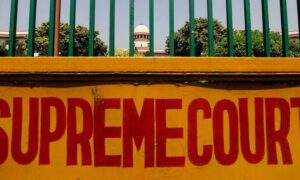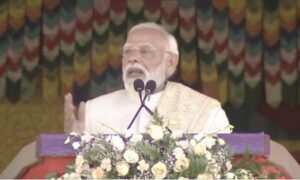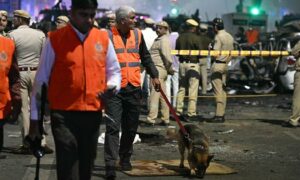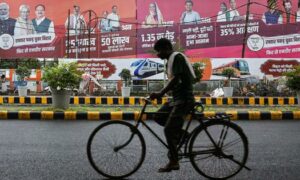
History moves through a series of events that stack upon one another – timely and mistimed, intentional and accidental, logical and baffling. To understand the present means understanding this stack, something Abhishek Choudhary achieves effectively in Believer’s Dilemma: Vajpayee and the Hindu Right’s Path to Power, 1977–2018, the sequel to his award-winning Vajpayee: The Ascent of the Hindu Right, 1924–1977.
To grasp how the Hindu right rose so meteorically in the late 20th and early 21st centuries, one must study former Indian prime minister Atal Bihari Vajpayee’s life, a task not yet undertaken with such analytical depth. The text in both books itself is remarkably fluid and compelling, the kind you gobble up rather than simply read. Through a series of messages, emails, and calls, Scroll spoke to Choudhary to understand both the book and his process behind it.
I was fascinated by your prose style. It’s uncommon for political nonfiction to have novel-like touches. It reminded me of Truman Capote’s In Cold Blood – and generally of the American New Journalism of the 1960s-’70s. Was that intentional, and could you talk about it in detail?
I should take that as a compliment: thank you. The answer to whether it was intentional is, in most ways, no. In my 20s, I tried reading voraciously. Because I was a lapsed econ-public-policy guy, and had no formal training in journalism or creative writing, I tried to teach myself to learn to write by reading – reading slowly, deeply, carefully. And yes, some of the reading was exactly the kind of nonfiction you mention.
From Janet Malcolm’s The Journalist and The Murderer, I learnt that any journalist who shies away from facing their subject after the story comes out is a sweet little scamster. From Joan Didion, who one sadly hears mentioned more as a fashion icon than a prose stylist, I learnt that some of your finest writing can emerge from the edge of a panic attack. Gay Talese disgraced himself in old age by saying stunningly stupid things, but “Frank Sinatra Has A Cold” was perhaps the first time I discovered that you don’t need permission from a celebrity to write about them; that sometimes being denied access in fact lends authority and punch.
Since we are discussing the Vajpayee volumes, I suspect the moral framework might have come from elsewhere – Tagore, Orwell, Ambedkar, Naipaul. Coming from very different world-views, both Ambedkar and Naipaul arrived at a common conclusion: that India’s chief crisis is social, not political (or economic). To read them first was to have caught your ancestors naked. I read everything by Pankaj Mishra and Ramachandra Guha, and among biographers Katherine Frank and Patrick French; the early Caravan profiles were super-sharp. I am missing out a few names, but the broad point is: writing is mostly a by-product of what one reads: anything I would have attempted would have aspired to have a bit of literary flair.
I sometimes joke about being diagnosed with an advanced stage of Bilingual Blues – an affliction in which you transact in two languages (in my case, three actually: Maithili complicates things further), and feel entirely at home in neither. I translated a lot of stuff from Hindi to English, hoping to retain the ambiguity but also the music and the context. Sadly, though Hindi has great fiction and poetry and some razor-sharp satire too, there has been less innovation, to the best of my knowledge, in the nonfiction form. Vivek Shanbhag tells me this is exactly a problem in Kannada too.
I was lucky with early readers of the manuscript – especially Ramachandra Guha at the NIF, and my agent Shruti Debi. Dr Guha knows the archives better than anyone and would call me out every time I assigned a higher or lower proportion of weight to people and events. His feedback saved me from embarrassing errors of fact and interpretation. Shruti’s contribution was more at the level of structure, and though she came in towards the end, she has probably had more impact on the final material than anyone else. Her feedback on the second volume was more trenchant and ruthless, but it came from a position of care, and I spent a long time reworking it.
How has the reception of the book been so far? Relative to the first part, have you noticed any distinct reactions?
A book release is always an occasion to be fooled by randomness. I’ve received solidarity from the most unexpected quarters – especially lay readers – but also my fair share of left-liberal condescension on one hand and bitterness from right-wing forums on the other. Most people on the right assume the two volumes are hatchet jobs. Funnily, my books have never been touched by many of the magazines I loved in my youth – Outlook, Caravan, The Week. Perhaps in progressive circles, there is fatigue with the right wing, and, amid the current schizophrenic polarisation, most people are too preoccupied with everyday disasters to engage with history in a way that challenges their assumptions.
Rehan Fazal of BBC Hindi shot a show on the second volume, but he told me that he actually liked the first volume better because he knew so little about the pre-Janata phase. On the other hand, Akash (The Deshbhakt) Banerjee called up to say he found the first one a little academic, and that he liked the second one better for more or less the same reason that you mentioned in the first question. A few weeks ago, I got a text from a former RSS insider in Bombay saying he disagreed with most of the interpretations, but that “the flow is good.” I feel pleased every time an outlet beyond the Delhi–Bombay media loop responds with depth: the most thoughtful review of volume two so far has come from Kashmir Life.
The second volume is more confident and self-assured in its prose. It’s only been a little over two years, and certain passages of the first volume, despite their deeper archival excavation, are already giving me creeps. To tell the truth, a part of me has stopped worrying about immediate reception. I’ve come to believe that the life of a book really begins at ten. If I’ve managed to say something new, something of value, the books will, with some luck, survive. If not, they must sink.
The 1992 Babri Masjid demolition is seen as a watershed moment that catapulted the Hindu right into power. But you call it lazy and self-deceptive.
I grew up near a dam in small-town Jharkhand, so let me reach for dam metaphors: the bursting of a dam is a tragic spectacle. But an honest engagement must also account for the river swelling over the years, the faulty engineering, the soil and vegetation of the area.
There are many ways to analyse the rise of the Hindu right. One is electoral. By the early 1960s, there already existed what one might call a 10% core Hindu vote. At the time, it was scattered among small right-wing parties – Jan Sangh, Hindu Mahasabha, Ram Rajya Parishad, and a few others. In Gorakhpur, where today’s UP chief minister Adityanath comes from, Mahasabha and Jan Sangh often fought against each other, splitting the vote and handing Congress victory. Adityanath’s ideological forbears were Mahasabha men who joined the BJP only after the Mahasabha collapsed.
While others shrank, Jan Sangh galloped: four Lok Sabha seats in 1957, 35 in 1967, 90 in 1977. Still an urban Brahmin–Bania outfit, it nonetheless sent 29 Dalits to the UP Assembly in 1967. When Jan Sangh merged into Janata in 1977, it briefly had more than 100 MPs. A faction with 100 MPs is not exactly obscure.
There is also an emotional and ideological dimension. From the late 1940s, a strand of the Hindi intelligentsia had already begun to echo themes that suited the Sangh, even if inadvertently. Rahul Sankrityayan and Mahadevi Verma, whose essays Panchjanya carried soon after the Constitution’s adoption, scolded the government for copying the West and ignoring India’s own traditions. Two decades later the great poet Ramdhari Singh Dinkar, who had earlier mocked the Parivar and generally been an avowed socialist and a good friend of Nehru, agreed to inaugurate the 1972 ABVP annual session and, until his death, lent sympathy to the student movement as a quest for national unity. Even Agyeya, the great modernist, drifted in his later years toward a civilisational language that overlapped with Hindu nationalist ideas. Such interventions – sometimes emotional, sometimes opportunistic – gave the Parivar an aura of cultural legitimacy long before Ayodhya.
Politicians had their own calculations: Patel gave them the benefit of the doubt during 1948–50, Lohia collaborated with them in the early 1960s, Rajaji in the late 1960s; JP famously gave them a clean chit in 1975. During the Janata years, they worked closely with much of the non-communist opposition. You can’t tackle the right-wing juggernaut until you understand the legacy of this complicated history. I am by no means the first to document this: Christophe Jaffrelot and Damle-Andersen have addressed some of these points earlier.
True, many of their early experiments flopped: the cow protection movement of the late 1960s, the Janata experiment, the BJP’s brief flirtation with Gandhian socialism. But they learned and improvised. The RSS was desperate to capture political power, sensing, more or less accurately, that capturing the state would allow it to reshape the body politic. From 1967 onward, every time the Sangh Parivar tasted power, it used the moment to expand its hydra-headed organisation: affiliates bought real estate, media-propaganda arms grew, cadre infiltrated government departments. Sometimes the mere capture of power is enough to electrify the faithful.
Look at the state of today’s mainstream media and top-tier judiciary, and you see how handsomely this long game has paid off. This is in stark contrast to how many socialists and communists viewed electoral politics. Famously, Jyoti Basu was denied the prime ministership in 1996 by his own party’s politburo. I believe that even a nine-month stint would have strengthened the CPI(M) immensely.
In that case, were we destined to arrive at our present political moment?
I’ve tried to situate the universe – sociological, psychological, emotional – in which Hindutva operated, and to show how its rise owed as much to the irreversible decline of Congress and its hollowing out of public institutions as to the demise of global communism, the stirrings of pan-Islamic militancy, and the everyday anxieties of uneven liberalisation. Old historical victimhood met new sociological and geopolitical neuroses.
At the same time, I must point out that the Hindu right’s rise looks linear only in hindsight: in reality it was marked by false starts, contested leadership, long stretches of marginalisation. Yet once certain mistakes were made, the path to this moment narrowed. Avoiding it would have required an unusual circumspection that our politics, our institutions, rarely practiced. Were we destined? Perhaps, in the sense that no one corrected course when they still could. But to call it inevitable would be to flatten all complexity – and only a fool would do that.
If anything, I would say the opposition should borrow some of their tactics, just as in early decades they borrowed from communists a playbook for effective grassroots organisation, adapting it to a religious-nationalist framework. Let me give an example: Rahul Gandhi went from being the country’s most eligible bachelor in 2009 to being written off as a dim-witted “Pappu” by 2013. His party has not been able to reverse this image even after 12 years. Every year I spend some time in my village in Madhubani. That slice of Bihar is not exactly a Hindutva hotbed, like central India, yet I rarely meet anyone who organically praises Rahul Gandhi. While reading my chapters Ramachandra Guha remarked, more than once, that Rahul Gandhi ought to learn from Vajpayee’s theatrics in the 1970s.
In a country as large, as diverse, and as resource-scarce as India, progressive politics will always be harder to sell than manufacturing or reinventing hatred. Yet the intelligentsia, and sometimes even political parties, obsess over praxis while neglecting precise ground tactics. We often lose sight of a basic fact: that winning elections is one of the chief moral imperatives of any political party. And this game will always remain messy, violent, compromised. The opposition needs original ideas, fresh strategies, sharper tactics, and a heavy dose of theatrics too. And it’s never too late.
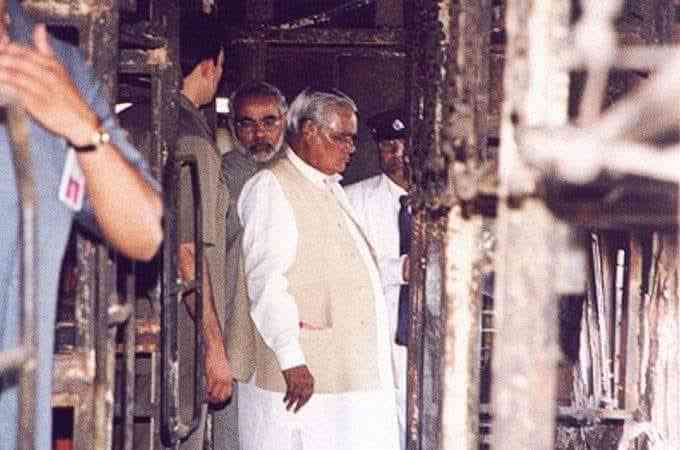
Do you think Vajpayee’s prime ministerial terms were a nod to the benefits of coalition politics?
Yes, especially when compared with the post-2014 scenario. If you leave aside the Nehru years, it’s clear that coalition governments work better – or in any case are less worse – than majority governments. Even though coalition produces a weak office, the good part is that it forces the executive to be more accountable, not least because the coalition allies are carefully watching.
Vajpayee’s story in office was essentially the one of being whipped by the Left and the Right and the Centre, and how he negotiated the pressures. For better or worse India will find itself returning to coalitions, and he will continue to be a study in successfully managing the many contradictions.
But he also embodies one of democracy’s fundamental paradoxes. By widening the democratic process, he helped transform India into a genuine multi-party democracy. Three decades ago, no one believed that a party other than Congress could steer this mindbogglingly disparate landmass. In doing so, however, he also normalised the BJP as a legitimate governing force, giving the Hindu right a foothold in mainstream power.
Do you think a 2004 victory would’ve seen a very different trajectory for BJP and Hindutva politics?
Not quite. Counterfactuals are tricky. In any case the BJP would not have fetched a majority in 2004. By then Vajpayee was in poor health, the RSS was restless with his moderation, and a younger, harder-edged leadership within the BJP was asserting itself. Even had he continued as prime minister, he would have been constrained by both coalition politics and the ideological impatience of the Sangh Parivar. My wild guess is that Vajpayee would have continued for a while, before eventually letting Advani take over.
How do you see the gap between Vajpayee’s poetry and policy, his lyrical self vs. governing self?
Vajpayee’s poetry and politics often belonged to different worlds. The poems are suffused with irreverence, anger, doubt, irony, melancholy – the voice of a man who recognised the limits of power and the fragility of all human aspiration. His politics, especially towards the end, was often compromised and downright conformist. That tension between the lyrical self and the governing self mirrored the larger ambiguity and doublethink of his career: a figure shaped by the RSS yet often straining against its rigidity, a man who could sound like an independent liberal, using poetry to cleanse the palate.
Liberal intellectuals often idealise Vajpayee as the “acceptable face” of Hindu nationalism. How does this misreading of his legacy affect contemporary Indian politics?
Vajpayee was moderate in tone, not in ideological affiliation. Misreading him as a Nehruvian liberal exaggerates the novelty of the 2014 mandate. It was radical in some crucial ways, but there were many earlier landmarks. We must shed what tenured academics call “presentism” and reckon with all the continuities from the past. To oversimplify the story of the right-wing movement is a dangerous evasion. Carried for long, evasion becomes the opposite of a solution – and that is where we find ourselves right now.
Last question: What are you reading or watching right now? Do you have “a next” in mind?
I have Janita Karkatta’s Ishwar Aur Bazar and Vauhini Vara’s Searches: Selfhood in the Digital Age by my bedside. I recently finished The Crown. At times, I was stunned by its production quality, which will remain hard to match. But I was also reminded that much of it comes down to intention – neeyat – to make a detached, unsentimental show that explains why many Brits remain so emotionally tied to a ridiculously outdated institution. In India, biopics are mostly propaganda made by very shady people; even a two-minute teaser creeps me out.
Lately, though, I’ve been tripping on something else. The other day, I watched Jia Zhangke’s Ash Is Purest White. The 6th generation Chinese filmmakers are modernity’s sharpest chroniclers, even though pop culture barely whispers their names. A woman happily takes five years in prison to protect her boyfriend, a goonda in an obscure mining wasteland, only to come out and find that both he and her town have moved on. She must stay afloat, survive, even thrive. Before this, I loved A Touch of Sin: a miner shoots his corrupt contractor; a sauna receptionist stabs a wealthy client who insists on sex – violence at once absurd and inevitable, and hardly unjust.
To watch Jia, and before him Wang Xiaoshuai, was like being handed a new pair of eyes. (One of Jia’s early heroes was Raj Kapoor – his debut Platform even has a scene with Awaara playing in the background.) Their work captures all the epiphanies and all the trauma of the communist restructuring and the more recent capitalist rush in China. Watching them reminded me that our journeys through modernity – displacement, disillusionment, the emotional cost of nationhood – are more alike than we admit or even understand. I felt with these films an emotional and intellectual intimacy I had not felt with cinema in a long time. Suddenly, it occurred to me why Tarantino’s swagger or Danny Boyle’s flash, so casually borrowed by our filmmakers, feels slick and stylish but not wholly lived in. And yet we remain so severed from the Chinese imagination, as they are from ours.
I have many nexts in mind, but first I need to recharge my mental and intellectual batteries. It will probably not be a biography; it will most certainly not be a book about Sanghis. I have desperately missed the epiphanies of the shorter format and want to return there for a while.
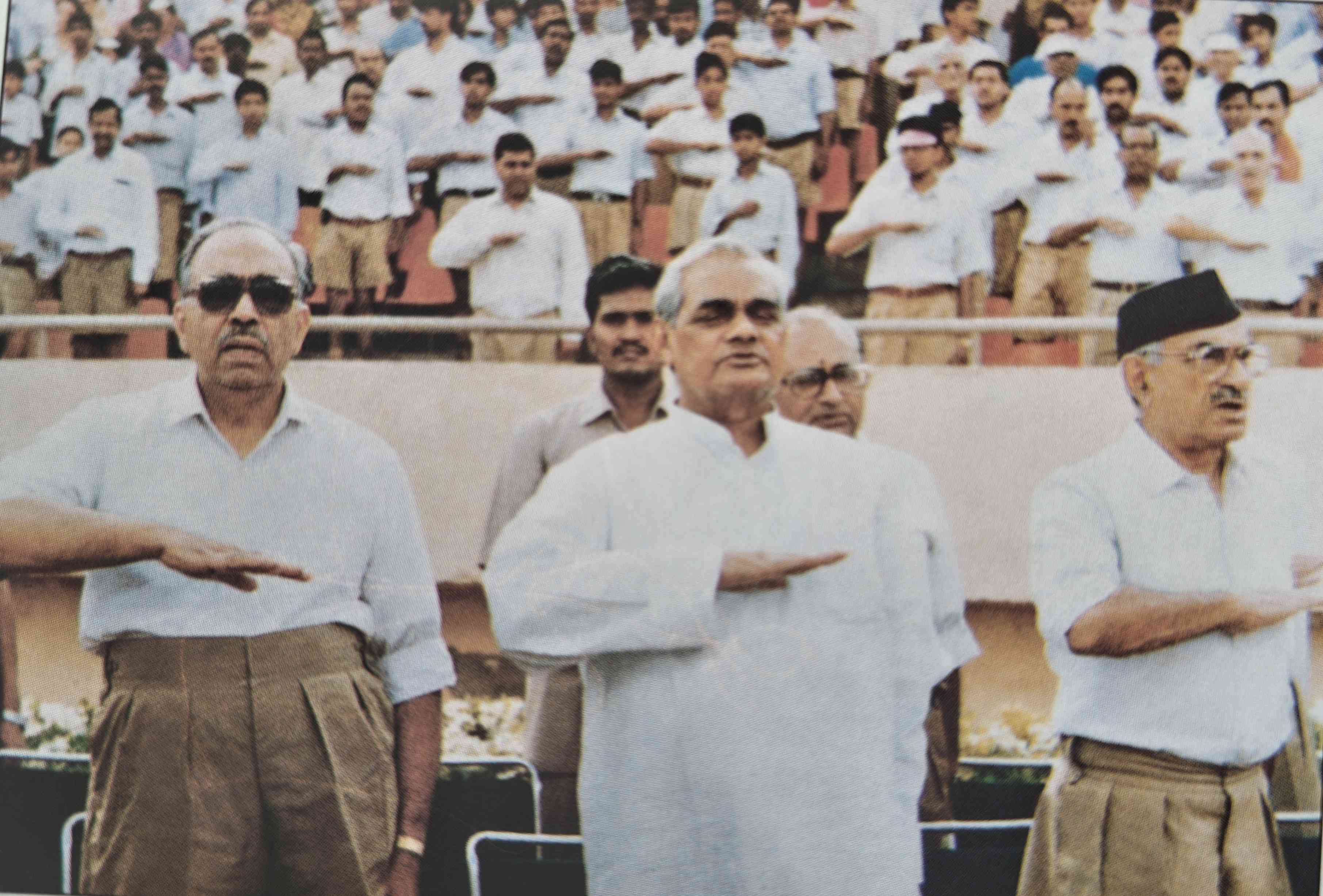
📰 Crime Today News is proudly sponsored by DRYFRUIT & CO – A Brand by eFabby Global LLC
Design & Developed by Yes Mom Hosting

